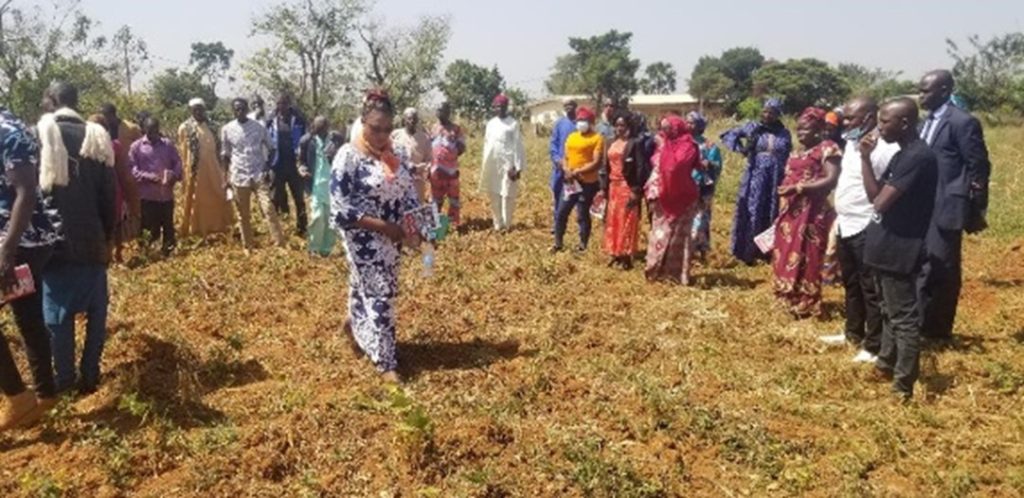by Siri Bella, Oumarou Palou Madi, Choh Andison, Eileen Nchanji, Patricia Onyango, Owen Kimani
Extensive bean research has been happening over the past decade in Cameroon, specifically in two major bean production hubs of West and Northwest regions besides other production areas with favorable climatic conditions such as the Adamawa region. A scoping study was conducted early this year to understand these regions’ production and market potential. In addition, we also wanted to understand the varieties men and women farmers, traders, and consumers prefer to grow, sell, and buy. This is imperative for the uptake of improved bean varieties in the region. Results show that men and women grow and trade mainly in red and black bean market classes with high market demand from neighboring regions and countries.
There were significant differences in the main occupation between male and female producers, where higher percentages of females were engaged in food crop production (78%) than males (8%). Nonetheless, a significantly higher number of males were involved in off-farm activities (32%) – civil service and non-farm work, cash crop, and livestock production than females, as shown in Table 1.
 Adamawa region is poised to emerge as one of the major exporters of beans in Cameroon to neighboring countries such as Chad, the Republic of Congo, Gabon, Equatorial Guinea, and the Central African Republic of productivity and production can be increased.
Adamawa region is poised to emerge as one of the major exporters of beans in Cameroon to neighboring countries such as Chad, the Republic of Congo, Gabon, Equatorial Guinea, and the Central African Republic of productivity and production can be increased.
Women’s land access and ownership is not a problem, as shown in Figure 2, where women rent land for crop production. In addition, women’s land under beans is not significantly different from their male counterparts, as shown in Table 2.
 Despite the immense potential of bean production and marketing in the Adamawa region, knowledge on improved bean variety is still lacking as farmers cultivate and sell the local variety (Merengue), whose yields and nutritional value are relatively lower than improved ones. Other constraints reported by traders and farmers were; grain impurity; lack of storage facilities leading to post-harvest losses; low grain supply to meet market demand; the local variety is the only available seed; crop destructions by animals, and climatic changes. This has contributed to low yield and productivity, as shown in Table 2.
Despite the immense potential of bean production and marketing in the Adamawa region, knowledge on improved bean variety is still lacking as farmers cultivate and sell the local variety (Merengue), whose yields and nutritional value are relatively lower than improved ones. Other constraints reported by traders and farmers were; grain impurity; lack of storage facilities leading to post-harvest losses; low grain supply to meet market demand; the local variety is the only available seed; crop destructions by animals, and climatic changes. This has contributed to low yield and productivity, as shown in Table 2.
 With this background, the Institute of Agricultural Research for Development (IRAD) and Alliance of Bioversity International, and the International Center for Tropical Agriculture, through the bean program, Pan Africa Bean Research Alliance (PABRA), organized a field day to expose all relevant stakeholders to other improved biofortified bean varieties with short cooking time.
With this background, the Institute of Agricultural Research for Development (IRAD) and Alliance of Bioversity International, and the International Center for Tropical Agriculture, through the bean program, Pan Africa Bean Research Alliance (PABRA), organized a field day to expose all relevant stakeholders to other improved biofortified bean varieties with short cooking time.
 An organoleptic test was carried out with two biofortified and quick cooking time bean varieties to boost their interest in bean consumption since 75% of farmers produce beans only for the market. Moving forward, this collaboration will help increase the number of demonstrations from two to four, and farmers involved would be provided with certified seeds and trained on good agronomic practices.
An organoleptic test was carried out with two biofortified and quick cooking time bean varieties to boost their interest in bean consumption since 75% of farmers produce beans only for the market. Moving forward, this collaboration will help increase the number of demonstrations from two to four, and farmers involved would be provided with certified seeds and trained on good agronomic practices.


